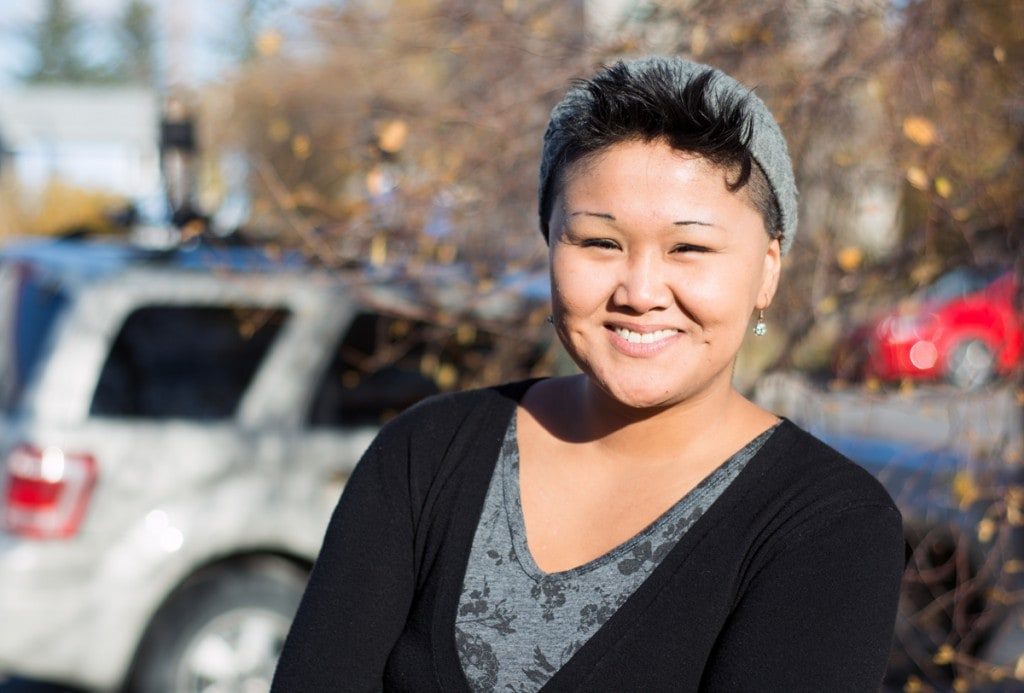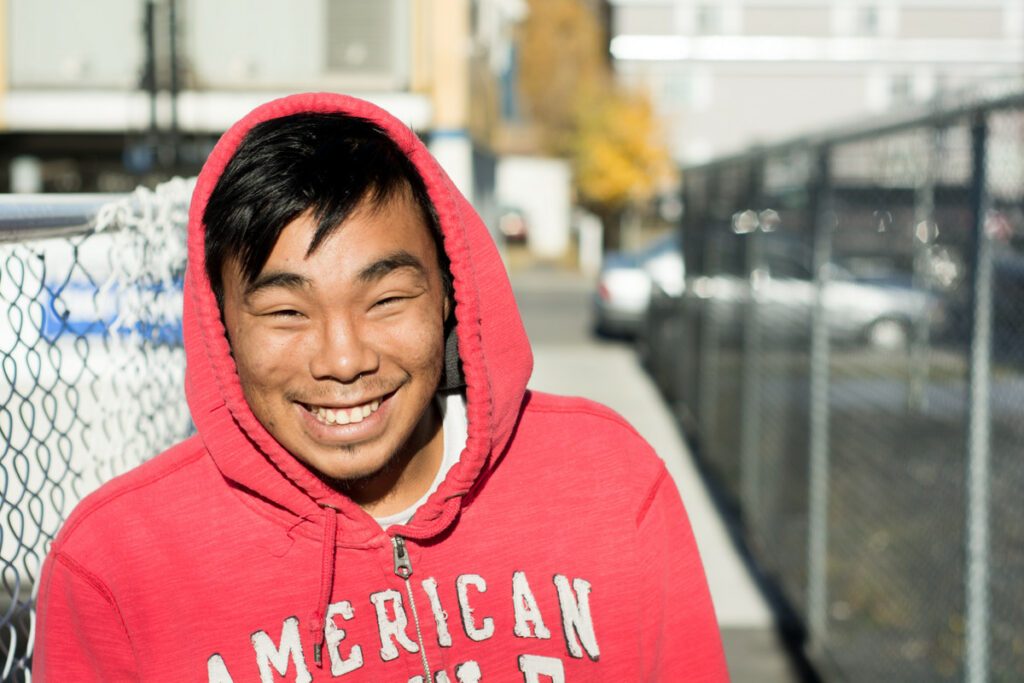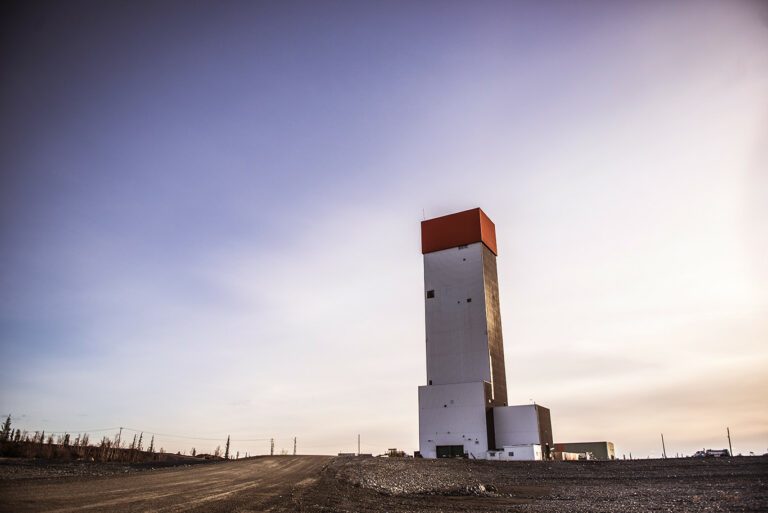Four years ago, Brent Michael robbed a taxi driver for crack money. The cab had been called to the Village Reddi-Mart on an early December morning. Brent, 20 at the time, got in the passenger’s seat and began trashing the car while threatening the cabbie with a stick. According to news reports of the trial, the cabbie handed over $20 or $30 and Brent and an accomplice fled towards Northland Trailer Park, where police apprehended him a short time later.
“Both of you are very young and have your whole lives ahead of you,” said Justice Louise Charbonneau as she sentenced Brent to 30 months in prison. “I hope you use your time in custody to address your issues.”
He served 28 months and eight days.
“That kind of opened my eyes,” says Brent, now 23 and living in Hope’s Haven, the transitional housing building at the centre of Yellowknife’s new strategy to help young people escape addiction, crime and homelessness. “I lost a lot of friends in those couple of years, people I grew up with. I lost a lot of family and I went through a lot of looking at myself, and I said I can’t always do what I used to do. It will always put me in here and I can’t do that anymore.”
But after leaving prison in the fall of 2014, he found himself back on the streets, couchsurfing and drinking – a pattern he’d struggled with ever since leaving foster care at age 18. By springtime, he was looking for something better.
He managed to land a room in Hope’s Haven shortly after it opened this June. And last Thursday, rocking a white Team NWT basketball T-shirt and a huge grin, he snipped a blue ribbon held by Mayor Mark Heyck and SideDoor executive director Iris Hamlyn, officially opening Hope’s Haven.
“I love it here,” he says after the ceremony, standing outside the two-storey building on 52nd Street. “I’ve been a lot more sober, I have a lot more structure in my life, I have a lot more stuff I’m looking forward to. I just got myself accepted for a school program and an online correspondence course, at the same time when everyone was telling me I was just going to mess up and go back to drinking. So that feels good.”
The idea behind Hope’s Haven is straightforward: give young people like Brent a roof over their heads, some daily structure and help with education, life skills and employment, and they’ll start making the choices needed to nip the cycle of poverty and homelessness in the bud.
Only several months into the project, and with more services rolling out in the coming months, it’s too early to assess if it’s successful. But to an outside observer, it seems to be going pretty darn well.
When I visit Hope’s Haven the day before the opening ceremony, the entrance hall reeks of nail polish.
“At least my nails are cute!” cries a boisterous young woman sitting on the couch in a pink Lululemon hoodie. Beside her, two youths are playing online poker and scrolling Facebook; on the wall above the computers hang big wooden letters: #homeless2HOPE.
The place has the feel of a college dorm, and an upscale one at that. Young people come and go wearing toques, skinny jeans, Bob Marley backpacks; in the front hall sit high-top Pumas, skate shoes and Uggs. One person rolls a cigarette while another talks about scoring some weed. A staff member in his 20s chats about X-Box games and a missing controller with one of the residents.
Though I know it shouldn’t be, the relaxed intimacy of the scene is striking: eight young people, ages 16 through 23, sharing a space like, well, eight young people.
That day, a resident is turning 18 and there’s a birthday party in the large living room/dining area on the first floor. Streamers hang on the walls and balloons bob on the floor. A game of beer pong has been set up with water in the red plastic cups instead of beer. Pizza, nachos, pop, bannock and cake are served.
After blowing out the candles on his cake, the birthday boy grabs a helium balloon, pinches a hole and inhales deeply.
“Helllloooo,” he says in a high-pitched voice. Everybody laughs.
***
SideDoor Youth Ministries purchased the building earlier this year with help from the City, which funneled nearly $600,000 in federal funding towards the program. They also received funding from Health and Social Services and De Beers Canada. The building has ten individual rooms, with a shared washroom for every two, and there’s a three-suite apartment that they’re hoping to turn into a quasi-independent living space for older youth. Rent is $950 a month, including three meals a day, and can be covered by income support.
“It’s like a four-star shelter,” says one resident, who asked not to be named, with a laugh. He recently moved to Yellowknife from Lutsel K’e and had spent several months living in a youth shelter in Edmonton earlier this year. “There, it’s just dirty, you have to sleep on mats, there’s [someone on] a mat right beside you, and you sleep on the floor. There’s no blankets, all you get is a pillow.
“Here you get your own bed, your own blanket and pillow, you can wash your clothes every day, you get breakfast, lunch and supper. There were bedbugs going on there [in Edmonton]. I guarantee you’ll never see bedbugs here!”
This kind of living space – one that gives people dignity – is at the core of the Hope’s Haven housing-first model. Of equal importance are “wrap-around services.”
Each youth has a navigator, basically a support worker, who helps with everything from resume writing to making and keeping appointments. Starting soon, there will be workshops on cooking, art and traditional skills like beading and working with sealskin and moosehide four nights a week. And there’s the Resource Centre for YOUth at the SideDoor building on 50th Street which hosts an evening drop-in centre, a homework club and a career centre.
In mid-October, the centre is launching an innovative employment program where young people with limited work experience will be given basic training like First Aid and CPR and matched up with employers. To reduce risk for the employers, the wages will be paid by the SideDoor with Health and Social Services funding.
The evening I visit Hope’s Haven, jobs and education seem to be on everybody’s mind. One of the youth has an interview lined up at Boston Pizza; another guy returns from a day’s work in carpenter’s overalls.
Then there’s 20-year-old Tiffany Thrasher, who used to deal drugs and spent a year living on the streets when she was 16. She’s studying to be a personal support worker at Aurora College and thinking of becoming a nurse. Brent, for his part, is taking an online course in information technology design and will soon be heading to Edmonton for a carpentry course at NAIT.
***
“The biggest eligibility is willingness: this is what we offer, are you willing to come alongside us and have us work with you?” says SideDoor’s Iris Hamlyn, explaining the balance between responsibility and freedom that underpins the operation.
People enter Hope’s Haven willingly and agree to certain guidelines. There’s a curfew at midnight, guests have to check in at the front desk and you’re not allowed to drink on-site. But that’s not to say there’s a zero tolerance policy.
It’s ok to come in a little inebriated, “as long as you’re not causing trouble,” says Tiffany. “They don’t encourage drug use but [being sober] is not a requirement here.”
If you’re too out of it, she says, you have to sleep in the room devoted to an eight-bed emergency shelter, which is also open to youth who don’t live in the building. One time, after going to her room instead of the shelter while heavily intoxicated, staff called the police and she had to spend the night in the drunk tank.
Overall, though, substance abuse doesn’t seem to be a big problem in the building, she says. And it doesn’t seem to be patronizing rules – bound to trip up any teen or 20-something – that are making the difference, but rather supportive staff and a structured environment.

Tiffany Thrasher appreciates the structure Hope’s Haven provides but wants to get her own place soon
“If I had my own place I’d end up drinking pretty much every night,” says Tiffany, who has cut back her drinking to only once every couple of weeks since living in the building. “Rules do help, especially when they help you stay organized, because I suck at that – I would forget about so much if they didn’t remind me.”
Some tough love, like staff opening bedroom doors and flicking on the lights if the youth are sleeping all day, can be “highly annoying,” she adds. “But it’s pretty good, because otherwise I wouldn’t give any guidelines or restrictions to myself. I’d probably start doing the whole stay-up-all-night, sleep-all-day kind of thing.”
***
Despite an increased city-wide focus on youth homelessness, Iris admits it’s difficult to get a firm grasp on the scale of the problem.
“They’re not the typical adults who hang around at the post office… Youth are more or less couchsurfers, and they’ll find a couch or a bed; it may not be a healthy choice, but [they’ll find] a roof over their head – they’re very resourceful.”
What numbers are available, however, show an upward trend: “Last year alone, we had 119 individual youth who stayed at the SideDoor [emergency shelter], up from 67 the previous year,” says Iris.
The causes of youth homelessness, as with adult homelessness, are extremely complex – especially in the North, where social problems are trebled by racism and the very recent history of colonization and residential schools. Add to that the complexity surrounding migration from the communities to Yellowknife, high rates of fetal alcohol syndrome and an overburdened welfare and housing system, and it’s hardly surprising that young people fall through the cracks.
What is clear, says Iris, is the need for early and effective intervention with things like housing-first: “All research shows that if you combat youth homelessness within the first two years you can sway them from being entrenched.”
The other piece of the puzzle is improving the territory’s foster care system. Iris says upwards of 85 percent of homeless youth in the territory came through the system.
Not all experiences of foster care are bad. Brent, for example, lived in a single foster home until he was 18 and says he had loving and supportive foster parents. But for many people, foster care is marked by constant upheaval, what Brent calls “family shopping.”
“I hated it,” says Tiffany, who was shuffled between foster homes until she was adopted at age 10. “Most of them actually were pretty nice, but there were some foster parents that were abusive or mean.”
The key to improving the success of youth coming through the system is increasing stability, says Tammy Roberts, executive director of the Foster Family Coalition of the NWT. “How could anybody focus on math or English when you don’t know where you’re going to live, you don’t know what’s happened with mom and dad or siblings.
“Keeping them in the same place where they feel comfortable and trusted and supported and safe for a period of time, then they have more brain space, or whatever it is, to focus more on academics.”
Within the last year, in response to a damning report from the federal auditor general, there’s been an overhaul of the system, including changes to the Child and Family Services Act that emphasize supporting families rather than apprehending children. The changes also extend the age youth can stay in the system from 18 to 24, which, ideally, means continued contact with social workers and financial support for foster parents as they help their kids transition to independence with things like rent and tuition.
More is needed, though, says Tammy. Quality care means dealing with the chronic shortage of foster parents, increasing financial support to foster families, offering better liability insurance to parents and ensuring mandatory training. Likewise, the extended age limit won’t necessarily improve things if the GNWT doesn’t hire more social workers to deal with the increased work load, something that doesn’t seem likely any time soon.
***
It’s clear that Hope’s Haven is only one small part of a much larger puzzle. And it has to be said that it’s not for everyone. Francis Himiak, who I met back in June shortly after he became the building’s first tenant, has since moved out and found his own place to live in Old Town.
“There were a few productive choice programs but it wasn’t really that much for me,” he tells me when we meet for coffee on Monday. “I just wanted to move out and get some time and some space to myself.”
Tiffany echoes this: “It’s fun sometimes, but some days I get tired of it.” Many youth leave home in the first place, as Tiffany did, seeking freedom from authority. It can be hard to willingly give that up.
“I want to get my own place soon, because I wouldn’t mind being able to have my own food and drinks in the house, be able to smoke inside.”
Yet this seems to be the ultimate goal of Hope’s Haven – prop up vulnerable youth, help them get a job and education, and eventually help them find their own place. It’s early days. But so far it seems like a place where people like Brent can turn their lives around and dream big.
“I’m going to finish my school and start my own construction company and help people who have a record try and get a job,” he says. “Because it kind of sucks – they’re all really smart people, but they keep going back to what they do because they weren’t given a second chance.”







